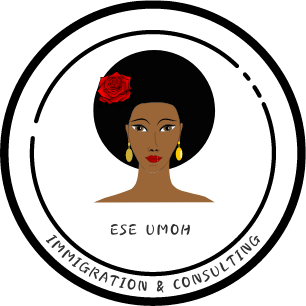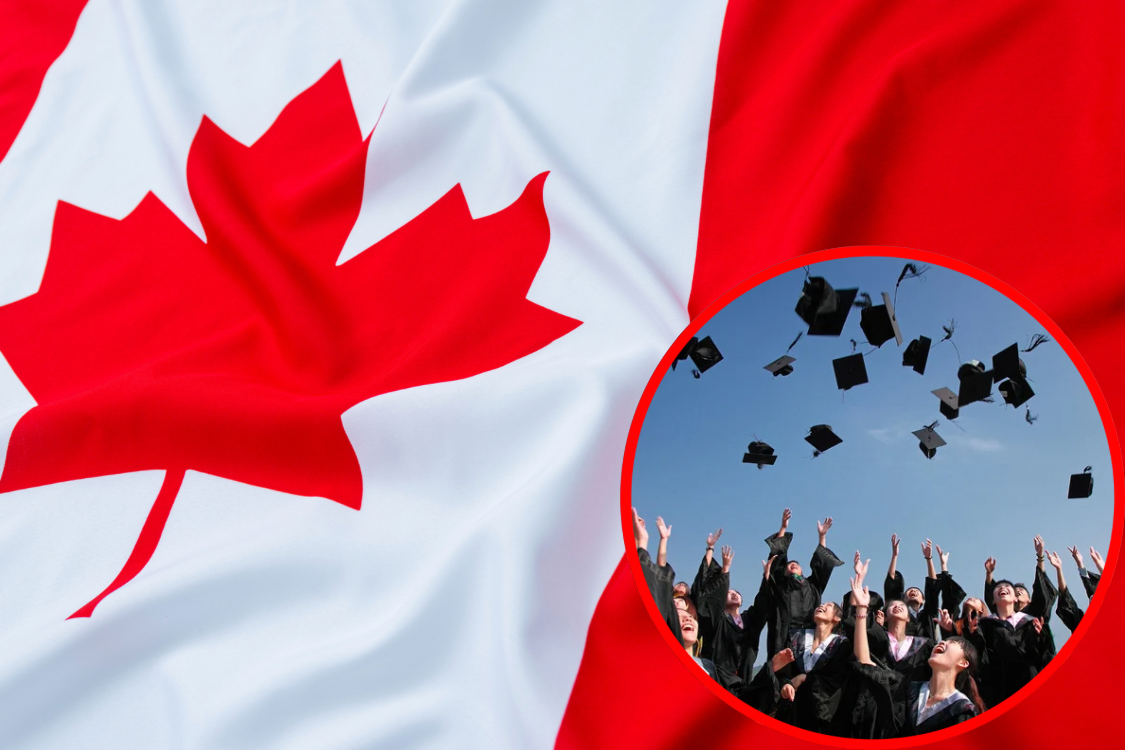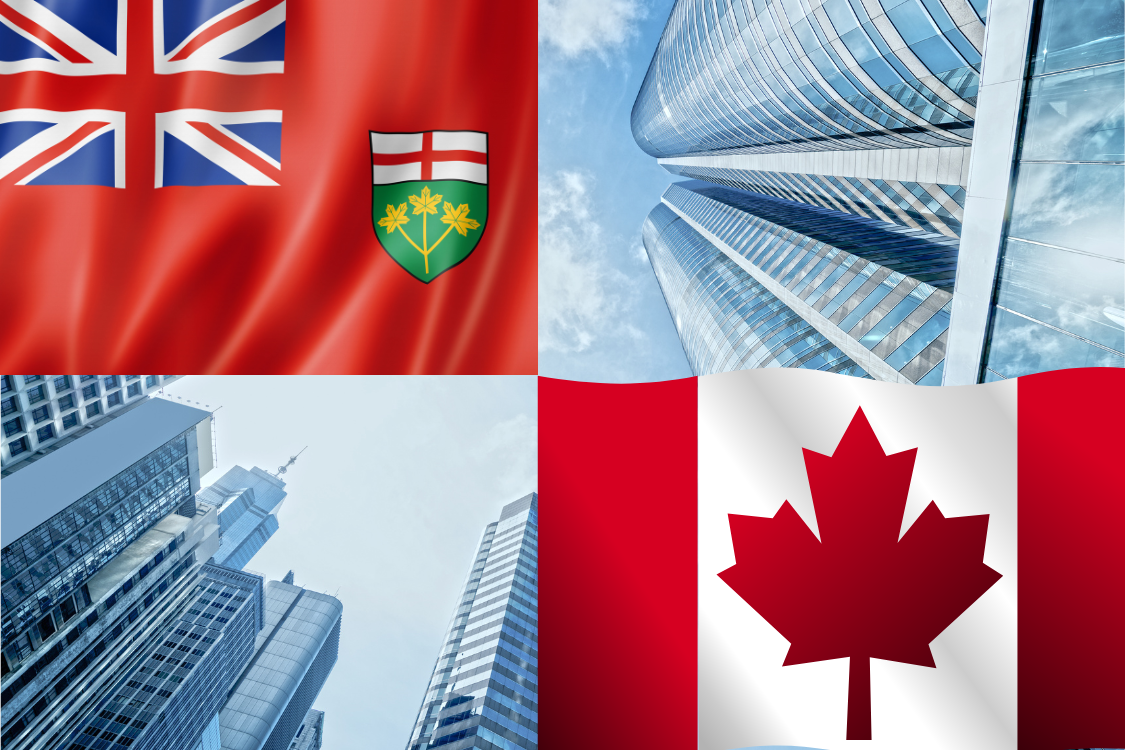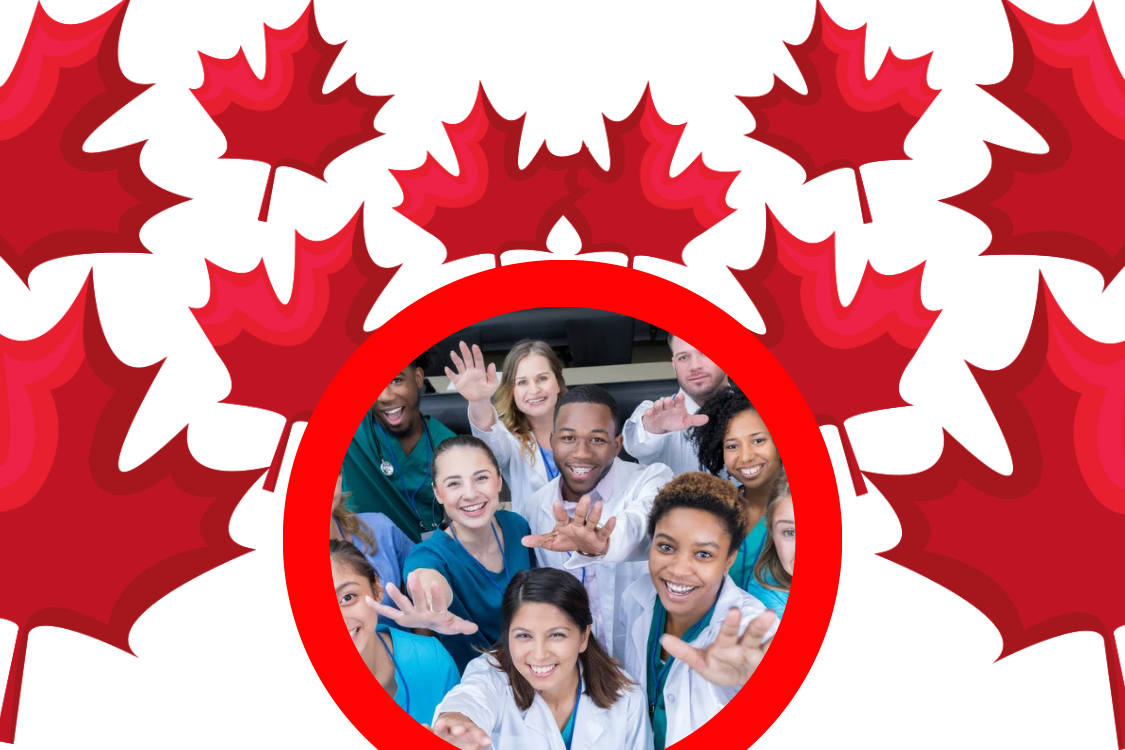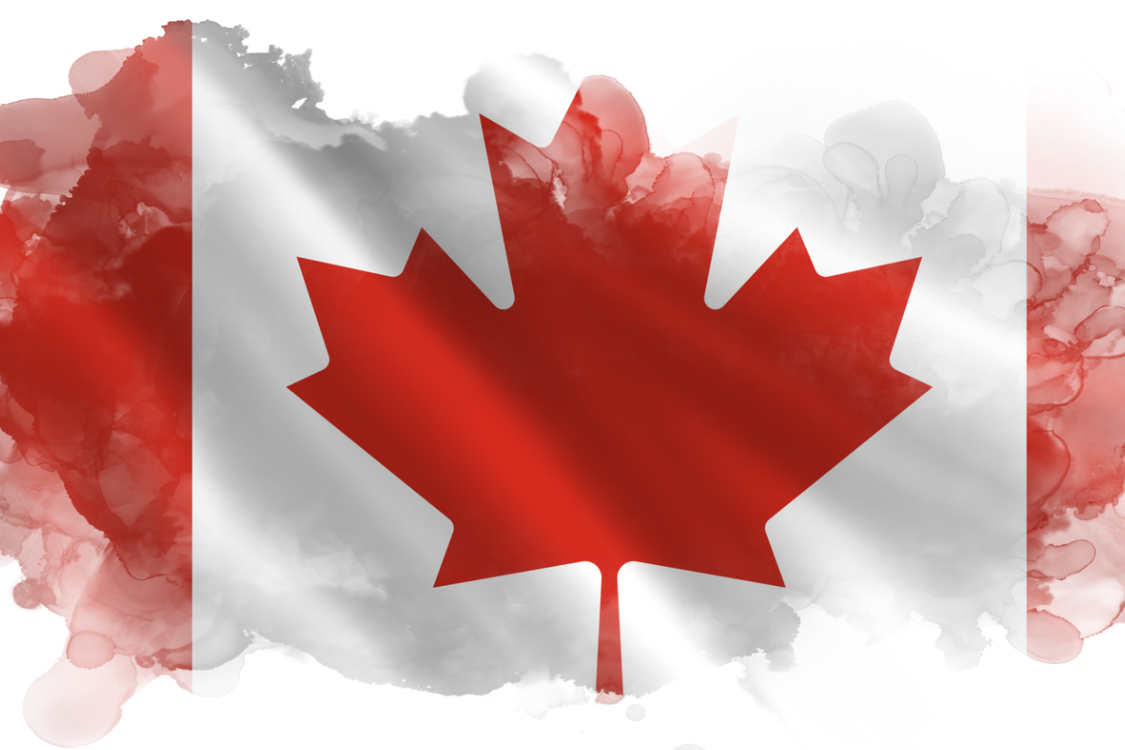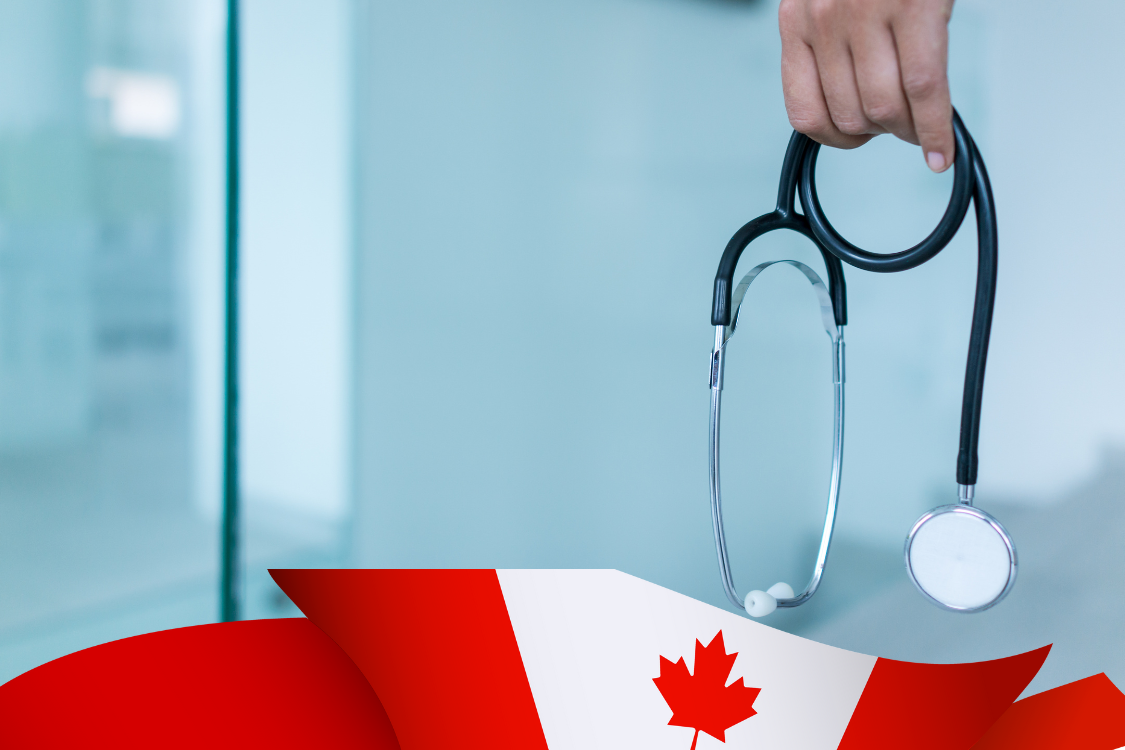Dear future neighbour,
Are you planning to visit, study, or work in Canada in 2026? Whether you’re booking a flight to see family, preparing for university, or advancing your career, one of the most important steps is understanding how long your visa application might take to be processed by IRCC (Immigration, Refugees and Citizenship Canada).
Every week, IRCC updates its processing times by country and application type and these timelines can vary widely depending on where you’re applying from and what kind of permit you’re seeking. As of January 7, 2026, many applicants around the world are seeing a range of wait times for temporary residence visas, including visitor visas, study permits, and work permits.
The processing time estimates listed below are designed to help you plan your application with confidence. They give you a realistic idea of how long IRCC may take to process visitor visas, study permits, and work permits based on your country of application. If you have fixed travel dates, school start times, or work commitments, applying as early as possible is strongly recommended. Please note that applications requiring additional review, or periods of high application volume, may result in longer processing times than those officially published by IRCC.
Processing time for Visiting Visa as at January 7, 2026
| S/N | COUNTRY | PROCESSING TIME (VISITING VISA) |
| 1 | Afghanistan | 90 days |
| 2 | Albania | 44 days |
| 3 | Algeria | 53 days |
| 4 | Andorra | No processing time available |
| 5 | Angola | 338 days |
| 6 | Anguilla | No processing time available |
| 7 | Antigua and Barbuda | 23 days |
| 8 | Argentina | 14 days |
| 9 | Armenia | 23 days |
| 10 | Aruba | No processing time available |
| 11 | Australia | 5 days |
| 12 | Austria | 41 days |
| 13 | Azerbaijan | 63 days |
| 14 | Bahamas | 21 days |
| 15 | Bahrain | 67 days |
| 16 | Bangladesh | 25 days |
| 17 | Barbados | 120 days |
| 18 | Belarus | 23 days |
| 19 | Belgium | 56 days |
| 20 | Belize | 23 days |
| 21 | Benin | 822 days |
| 22 | Bermuda | 52 days |
| 23 | Bhutan | No processing time available |
| 24 | Bolivia | 27 days |
| 25 | Bonaire | No processing time available |
| 26 | Bosnia and Herzegovina | 47 days |
| 27 | Botswana | 667 days |
| 28 | Brazil | 41 days |
| 29 | British Virgin Islands | No processing time available |
| 30 | Brunei | No processing time available |
| 31 | Bulgaria | 14 days |
| 32 | Burkina Faso | 78 days |
| 33 | Burma (Myanmar) | 22 days |
| 34 | Burundi | 207 days |
| 35 | Cambodia | 19 days |
| 36 | Cameroon | 190 days |
| 37 | Cabo Verde | No processing time available |
| 38 | Cayman Islands | 23 days |
| 39 | Central African Republic | 137 days |
| 40 | Chad | 509 days |
| 41 | Chile | 13 days |
| 42 | China (People’s Republic of) | 20 days |
| 43 | Colombia | 35 days |
| 44 | Comoros Island | No processing time available |
| 45 | Costa Rica | 29 days |
| 46 | Côte d’Ivoire | 161 days |
| 47 | Croatia | No processing time available |
| 48 | Cuba | 22 days |
| 49 | Cyprus | 43 days |
| 50 | Czech Republic | 41 days |
| 51 | Democratic Republic of Congo (Kinshasa) | 144 days |
| 52 | Denmark | 53 days |
| 53 | Djibouti | 107 days |
| 54 | Dominica | 42 days |
| 55 | Dominican Republic | 27 days |
| 56 | Ecuador | 23 days |
| 57 | Egypt | 101 days |
| 58 | El Salvador | 25 days |
| 59 | Equatorial Guinea | 561 days |
| 60 | Eritrea | 45 days |
| 61 | Estonia | 24 days |
| 62 | Eswatini | No processing time available |
| 63 | Ethiopia | 82 days |
| 64 | Fiji | 6 days |
| 65 | Finland | 95 days |
| 66 | France | 54 days |
| 67 | Gabon | 62 days |
| 68 | Gambia | 533 days |
| 69 | Georgia | 27 days |
| 70 | Germany | 43 days |
| 71 | Ghana | 529 days |
| 72 | Greece | 40 days |
| 73 | Grenada | 28 days |
| 74 | Gautemala | 32 days |
| 75 | Guinea | 571 days |
| 76 | Guinea-Bissau | No processing time available |
| 77 | Guyana | 20 days |
| 78 | Haiti | 47 days |
| 79 | Holy See | No processing time available |
| 80 | Honduras | 29 days |
| 81 | Hong Kong SAR | 15 days |
| 82 | Hungary | 50 days |
| 83 | Iceland | 71 days |
| 84 | India | 114 days |
| 85 | Indonesia | 22 days |
| 86 | Iran | 90 days |
| 87 | Iraq | 121 days |
| 88 | Ireland | 49 days |
| 89 | Israel | 28 days |
| 90 | Italy | 39 days |
| 91 | Jamaica | 20 days |
| 92 | Japan | 21 days |
| 93 | Jordan | 57 days |
| 94 | Kazakhstan | 25 days |
| 95 | Kenya | 88 days |
| 96 | Kiribati | No processing time available |
| 97 | Kosovo | 43 days |
| 98 | Kuwait | 63 days |
| 99 | Kyrgyzstan | 28 days |
| 100 | Laos | 18 days |
| 101 | Latvia | No processing time available |
| 102 | Lebanon | 43 days |
| 103 | Lesotho | No processing time available |
| 104 | Liberia | 721 days |
| 105 | Libya | 63 days |
| 106 | Liechtenstein | No processing time available |
| 107 | Lithuania | 24 days |
| 108 | Luxembourg | 98 days |
| 109 | Macao SAR | 16 days |
| 110 | Macedonia | 45 days |
| 111 | Madagascar | 322 days |
| 112 | Malawi | 137 days |
| 113 | Malaysia | 41 days |
| 114 | Maldives | No processing time available |
| 115 | Mali | 524 days |
| 116 | Malta | 40 days |
| 117 | Marshall Islands | No processing time available |
| 118 | Martinique | No processing time available |
| 119 | Mauritania | 234 days |
| 120 | Mauritius | 90 days |
| 121 | Mexico | 42 days |
| 122 | Micronesia (Federated States of) | No processing time available |
| 123 | Moldova | 15 days |
| 124 | Monaco | No processing time available |
| 125 | Mongolia | 15 days |
| 126 | Montenegro | 64 days |
| 127 | Morocco | 23 days |
| 128 | Mozambique | 274 days |
| 129 | Namibia | 570 days |
| 130 | Nauru | No processing time available |
| 131 | Nepal | 20 days |
| 132 | Netherlands | 44 days |
| 133 | New Caledonia | No processing time available |
| 134 | New Zealand | 5 days |
| 135 | Nicaragua | 35 days |
| 136 | Niger | 471 days |
| 137 | Nigeria | 34 days |
| 138 | North Korea | No processing time available |
| 139 | Norway | 59 days |
| 140 | Oman | 46 days |
| 141 | Pakistan | 68 days |
| 142 | Palestinian Authority (Gaza) | 214 days |
| 143 | Palestinian Authority (West Bank) | 214 days |
| 144 | Panama | 25 days |
| 145 | Papua New Guinea | No processing time available |
| 146 | Paraguay | 16 days |
| 147 | Peru | 26 days |
| 148 | Philippines | 17 days |
| 149 | Poland | 28 days |
| 150 | Portugal | 52 days |
| 151 | Puerto Rico | No processing time available |
| 152 | Qatar | 88 days |
| 153 | Romania | 16 days |
| 154 | Republic of Congo (Brazzaville) | 82 days |
| 155 | Russia | 29 days |
| 156 | Rwanda | 209 days |
| 157 | Samoa | No processing time available |
| 158 | San Marino | No processing time available |
| 159 | Sao Tome and Principe | No processing time available |
| 160 | Saudi Arabia | 28 days |
| 161 | Senegal | 239 days |
| 162 | Serbia | 44 days |
| 163 | Seychelles | No processing time available |
| 164 | Sierra Leone | 558 days |
| 165 | Singapore | 41 days |
| 166 | Slovakia | No processing time available |
| 167 | Slovenia | No processing time available |
| 168 | Solomon Islands | No processing time available |
| 169 | Somalia | 91 days |
| 170 | South Africa | 598 days |
| 171 | South Korea | 21 days |
| 172 | South Sudan | 70 days |
| 173 | Spain | 52 days |
| 174 | Sri Lanka | 59 days |
| 175 | St. Kitts and Nevis | No processing time available |
| 176 | St. Lucia | 41 days |
| 177 | St. Vincent and Grenadines | 39 days |
| 178 | Sudan | No processing time available |
| 179 | Suriname | 49 days |
| 180 | Sweden | 49 days |
| 181 | Switzerland | 54 days |
| 182 | Syria | 69 days |
| 183 | Tahiti | No processing time available |
| 184 | Taiwan | 21 days |
| 185 | Tajikistan | 22 days |
| 186 | Tanzania | 181 days |
| 187 | Thailand | 19 days |
| 188 | Timor-Leste (Timor oriental) | No processing time available |
| 189 | Togo | 595 days |
| 190 | Tonga | No processing time available |
| 191 | Trinidad and Tobago | 28 days |
| 192 | Tunisia | 58 days |
| 193 | Turkiye | 21 days |
| 194 | Turkmenistan | No processing time available |
| 195 | Turks and Caicos Islands | 25 days |
| 196 | Tuvalu | No processing time available |
| 197 | Uganda | 74 days |
| 198 | Ukraine | 25 days |
| 199 | United Arab Emirates | 58 days |
| 200 | United Kingdom | 52 days |
| 201 | United States of America | 29 days |
| 202 | Uruguay | 26 days |
| 203 | US Virgin Islands | No processing time available |
| 204 | Uzbekistan | 28 days |
| 205 | Vanuatu | No processing time available |
| 206 | Venezuela | 24 days |
| 207 | Vietnam | 31 days |
| 208 | Yemen | 117 days |
| 209 | Zambia | 466 days |
| 210 | Zimbabwe | 515 days |
Processing time for Work Permit as at January 7, 2026
| S/N | COUNTRY | PROCESSING TIME (WORK PERMIT) |
| 1 | Afghanistan | No processing time available |
| 2 | Albania | 14 weeks |
| 3 | Algeria | 20 weeks |
| 4 | Andorra | No processing time available |
| 5 | Angola | No processing time available |
| 6 | Anguilla | No processing time available |
| 7 | Antigua and Barbuda | No processing time available |
| 8 | Argentina | No processing time available |
| 9 | Armenia | No processing time available |
| 10 | Aruba | No processing time available |
| 11 | Australia | 7 weeks |
| 12 | Austria | No processing time available |
| 13 | Azerbaijan | No processing time available |
| 14 | Bahamas | No processing time available |
| 15 | Bahrain | No processing time available |
| 16 | Bangladesh | 9 weeks |
| 17 | Barbados | No processing time available |
| 18 | Belarus | No processing time available |
| 19 | Belgium | 7 weeks |
| 20 | Belize | No processing time available |
| 21 | Benin | No processing time available |
| 22 | Bermuda | No processing time available |
| 23 | Bhutan | No processing time available |
| 24 | Bolivia | No processing time available |
| 25 | Bonaire | No processing time available |
| 26 | Bosnia and Herzegovina | No processing time available |
| 27 | Botswana | No processing time available |
| 28 | Brazil | 6 weeks |
| 29 | British Virgin Islands | No processing time available |
| 30 | Brunei | No processing time available |
| 31 | Bulgaria | No processing time available |
| 32 | Burkina Faso | 10 weeks |
| 33 | Burma (Myanmar) | No processing time available |
| 34 | Burundi | No processing time available |
| 35 | Cambodia | No processing time available |
| 36 | Cameroon | 8 weeks |
| 37 | Cabo Verde | No processing time available |
| 38 | Cayman Islands | No processing time available |
| 39 | Central African Republic | No processing time available |
| 40 | Chad | No processing time available |
| 41 | Chile | 4 weeks |
| 42 | China (People’s Republic of) | 9 weeks |
| 43 | Colombia | 6 weeks |
| 44 | Comoros Island | No processing time available |
| 45 | Costa Rica | No processing time available |
| 46 | Côte d’Ivoire | 7 weeks |
| 47 | Croatia | No processing time available |
| 48 | Cuba | No processing time available |
| 49 | Cyprus | No processing time available |
| 50 | Czech Republic | No processing time available |
| 51 | Democratic Republic of Congo (Kinshasa) | 9 weeks |
| 52 | Denmark | No processing time available |
| 53 | Djibouti | No processing time available |
| 54 | Dominica | No processing time available |
| 55 | Dominican Republic | No processing time available |
| 56 | Ecuador | 9 weeks |
| 57 | Egypt | 181 weeks |
| 58 | El Salvador | No processing time available |
| 59 | Equatorial Guinea | No processing time available |
| 60 | Eritrea | No processing time available |
| 61 | Estonia | No processing time available |
| 62 | Eswatini | No processing time available |
| 63 | Ethiopia | No processing time available |
| 64 | Fiji | No processing time available |
| 65 | Finland | No processing time available |
| 66 | France | 5 weeks |
| 67 | Gabon | No processing time available |
| 68 | Gambia | No processing time available |
| 69 | Georgia | No processing time available |
| 70 | Germany | 185 weeks |
| 71 | Ghana | 16 weeks |
| 72 | Greece | No processing time available |
| 73 | Grenada | No processing time available |
| 74 | Gautemala | 2 weeks |
| 75 | Guinea | No processing time available |
| 76 | Guinea-Bissau | No processing time available |
| 77 | Guyana | No processing time available |
| 78 | Haiti | 7 weeks |
| 79 | Holy See | No processing time available |
| 80 | Honduras | 3 weeks |
| 81 | Hong Kong SAR | 34 weeks |
| 82 | Hungary | No processing time available |
| 83 | Iceland | No processing time available |
| 84 | India | 9 weeks |
| 85 | Indonesia | 6 weeks |
| 86 | Iran | 34 weeks |
| 87 | Iraq | 122 weeks |
| 88 | Ireland | No processing time available |
| 89 | Israel | No processing time available |
| 90 | Italy | 19 weeks |
| 91 | Jamaica | 3 weeks |
| 92 | Japan | 4 weeks |
| 93 | Jordan | 24 weeks |
| 94 | Kazakhstan | No processing time available |
| 95 | Kenya | 15 weeks |
| 96 | Kiribati | No processing time available |
| 97 | Kosovo | No processing time available |
| 98 | Kuwait | 15 weeks |
| 99 | Kyrgyzstan | No processing time available |
| 100 | Laos | No processing time available |
| 101 | Latvia | No processing time available |
| 102 | Lebanon | 21 weeks |
| 103 | Lesotho | No processing time available |
| 104 | Liberia | No processing time available |
| 105 | Libya | No processing time available |
| 106 | Liechtenstein | No processing time available |
| 107 | Lithuania | No processing time available |
| 108 | Luxembourg | No processing time available |
| 109 | Macao SAR | No processing time available |
| 110 | Macedonia | No processing time available |
| 111 | Madagascar | 28 weeks |
| 112 | Malawi | No processing time available |
| 113 | Malaysia | No processing time available |
| 114 | Maldives | No processing time available |
| 115 | Mali | No processing time available |
| 116 | Malta | No processing time available |
| 117 | Marshall Islands | No processing time available |
| 118 | Martinique | No processing time available |
| 119 | Mauritania | No processing time available |
| 120 | Mauritius | 29 weeks |
| 121 | Mexico | 2 weeks |
| 122 | Micronesia (Federated States of) | No processing time available |
| 123 | Moldova | No processing time available |
| 124 | Monaco | No processing time available |
| 125 | Mongolia | No processing time available |
| 126 | Montenegro | No processing time available |
| 127 | Morocco | 8 weeks |
| 128 | Mozambique | No processing time available |
| 129 | Namibia | No processing time available |
| 130 | Nauru | No processing time available |
| 131 | Nepal | 4 weeks |
| 132 | Netherlands | 15 weeks |
| 133 | New Caledonia | No processing time available |
| 134 | New Zealand | No processing time available |
| 135 | Nicaragua | 3 weeks |
| 136 | Niger | No processing time available |
| 137 | Nigeria | 9 weeks |
| 138 | North Korea | No processing time available |
| 139 | Norway | No processing time available |
| 140 | Oman | No processing time available |
| 141 | Pakistan | 14 weeks |
| 142 | Palestinian Authority (Gaza) | No processing time available |
| 143 | Palestinian Authority (West Bank) | No processing time available |
| 144 | Panama | No processing time available |
| 145 | Papua New Guinea | No processing time available |
| 146 | Paraguay | No processing time available |
| 147 | Peru | 6 weeks |
| 148 | Philippines | 6 weeks |
| 149 | Poland | 188 weeks |
| 150 | Portugal | No processing time available |
| 151 | Puerto Rico | No processing time available |
| 152 | Qatar | 22 weeks |
| 153 | Romania | 31 weeks |
| 154 | Republic of Congo (Brazzaville) | No processing time available |
| 155 | Russia | 188 weeks |
| 156 | Rwanda | No processing time available |
| 157 | Samoa | No processing time available |
| 158 | San Marino | No processing time available |
| 159 | Sao Tome and Principe | No processing time available |
| 160 | Saudi Arabia | 6 weeks |
| 161 | Senegal | 6 weeks |
| 162 | Serbia | No processing time available |
| 163 | Seychelles | No processing time available |
| 164 | Sierra Leone | No processing time available |
| 165 | Singapore | 8 weeks |
| 166 | Slovakia | No processing time available |
| 167 | Slovenia | No processing time available |
| 168 | Solomon Islanda | No processing time available |
| 169 | Somalia | No processing time available |
| 170 | South Africa | 21 weeks |
| 171 | South Korea | 16 weeks |
| 172 | South Sudan | No processing time available |
| 173 | Spain | 10 weeks |
| 174 | Sri Lanka | 19 weeks |
| 175 | St. Kitts and Nevis | No processing time available |
| 176 | St. Lucia | No processing time available |
| 177 | St. Vincent and Grenadines | No processing time available |
| 178 | Sudan | No processing time available |
| 179 | Suriname | No processing time available |
| 180 | Sweden | No processing time available |
| 181 | Switzerland | No processing time available |
| 182 | Syria | No processing time available |
| 183 | Tahiti | No processing time available |
| 184 | Taiwan | 7 weeks |
| 185 | Tajikistan | No processing time available |
| 186 | Tanzania | No processing time available |
| 187 | Thailand | 6 weeks |
| 188 | Timor-Leste (Timor oriental) | No processing time available |
| 189 | Togo | 18 weeks |
| 190 | Tonga | No processing time available |
| 191 | Trinidad and Tobago | No processing time available |
| 192 | Tunisia | 9 weeks |
| 193 | Turkiye | 185 weeks |
| 194 | Turkmenistan | No processing time available |
| 195 | Turks and Caicos Islands | No processing time available |
| 196 | Tuvalu | No processing time available |
| 197 | Uganda | No processing time available |
| 198 | Ukraine | No processing time available |
| 199 | United Arab Emirates | 36 weeks |
| 200 | United Kingdom | 6 weeks |
| 201 | United States of America | 9 weeks |
| 202 | Uruguay | No processing time available |
| 203 | US Virgin Islands | No processing time available |
| 204 | Uzbekistan | No processing time available |
| 205 | Vanuatu | No processing time available |
| 206 | Venezuela | No processing time available |
| 207 | Vietnam | 7 weeks |
| 208 | Yemen | No processing time available |
| 209 | Zambia | No processing time available |
| 210 | Zimbabwe | No processing time available |
Processing time for Study Permit as at January 7, 2026
| S/N | COUNTRY | PROCESSING TIME (STUDY PERMIT) |
| 1 | Afghanistan | No processing time available |
| 2 | Albania | No processing time available |
| 3 | Algeria | 4 weeks |
| 4 | Andorra | No processing time available |
| 5 | Angola | No processing time available |
| 6 | Anguilla | No processing time available |
| 7 | Antigua and Barbuda | No processing time available |
| 8 | Argentina | No processing time available |
| 9 | Armenia | No processing time available |
| 10 | Aruba | No processing time available |
| 11 | Australia | 3 weeks |
| 12 | Austria | No processing time available |
| 13 | Azerbaijan | 4 weeks |
| 14 | Bahamas | No processing time available |
| 15 | Bahrain | No processing time available |
| 16 | Bangladesh | 4 weeks |
| 17 | Barbados | 11 weeks |
| 18 | Belarus | No processing time available |
| 19 | Belgium | 2 weeks |
| 20 | Belize | No processing time available |
| 21 | Benin | 9 weeks |
| 22 | Bermuda | No processing time available |
| 23 | Bhutan | No processing time available |
| 24 | Bolivia | No processing time available |
| 25 | Bonaire | No processing time available |
| 26 | Bosnia and Herzegovina | No processing time available |
| 27 | Botswana | No processing time available |
| 28 | Brazil | 5 weeks |
| 29 | British Virgin Islands | No processing time available |
| 30 | Brunei | No processing time available |
| 31 | Bulgaria | No processing time available |
| 32 | Burkina Faso | 3 weeks |
| 33 | Burma (Myanmar) | 4 weeks |
| 34 | Burundi | 18 weeks |
| 35 | Cambodia | 4 weeks |
| 36 | Cameroon | 9 weeks |
| 37 | Cabo Verde | No processing time available |
| 38 | Cayman Islands | No processing time available |
| 39 | Central African Republic | No processing time available |
| 40 | Chad | 6 weeks |
| 41 | Chile | 4 weeks |
| 42 | China (People’s Republic of) | 4 weeks |
| 43 | Colombia | 4 weeks |
| 44 | Comoros Island | No processing time available |
| 45 | Costa Rica | No processing time available |
| 46 | Côte d’Ivoire | 7 weeks |
| 47 | Croatia | No processing time available |
| 48 | Cuba | No processing time available |
| 49 | Cyprus | No processing time available |
| 50 | Czech Republic | No processing time available |
| 51 | Democratic Republic of Congo (Kinshasa) | 5 weeks |
| 52 | Denmark | No processing time available |
| 53 | Djibouti | No processing time available |
| 54 | Dominica | No processing time available |
| 55 | Dominican Republic | No processing time available |
| 56 | Ecuador | 7 weeks |
| 57 | Egypt | 15 weeks |
| 58 | El Salvador | No processing time available |
| 59 | Equatorial Guinea | No processing time available |
| 60 | Eritrea | No processing time available |
| 61 | Estonia | No processing time available |
| 62 | Eswatini | No processing time available |
| 63 | Ethiopia | 16 weeks |
| 64 | Fiji | No processing time available |
| 65 | Finland | No processing time available |
| 66 | France | 2 weeks |
| 67 | Gabon | No processing time available |
| 68 | Gambia | 11 weeks |
| 69 | Georgia | No processing time available |
| 70 | Germany | 3 weeks |
| 71 | Ghana | 21 weeks |
| 72 | Greece | No processing time available |
| 73 | Grenada | No processing time available |
| 74 | Gautemala | No processing time available |
| 75 | Guinea | 9 weeks |
| 76 | Guinea-Bissau | No processing time available |
| 77 | Guyana | No processing time available |
| 78 | Haiti | 5 weeks |
| 79 | Holy See | No processing time available |
| 80 | Honduras | No processing time available |
| 81 | Hong Kong SAR | 12 weeks |
| 82 | Hungary | No processing time available |
| 83 | Iceland | No processing time available |
| 84 | India | 3 weeks |
| 85 | Indonesia | 4 weeks |
| 86 | Iran | 17 weeks |
| 87 | Iraq | No processing time available |
| 88 | Ireland | No processing time available |
| 89 | Israel | No processing time available |
| 90 | Italy | 6 weeks |
| 91 | Jamaica | 4 weeks |
| 92 | Japan | 1 weeks |
| 93 | Jordan | 7 weeks |
| 94 | Kazakhstan | No processing time available |
| 95 | Kenya | 11 weeks |
| 96 | Kiribati | No processing time available |
| 97 | Kosovo | No processing time available |
| 98 | Kuwait | 5 weeks |
| 99 | Kyrgyzstan | No processing time available |
| 100 | Laos | No processing time available |
| 101 | Latvia | No processing time available |
| 102 | Lebanon | 10 weeks |
| 103 | Lesotho | No processing time available |
| 104 | Liberia | 14 weeks |
| 105 | Libya | 4 weeks |
| 106 | Liechtenstein | No processing time available |
| 107 | Lithuania | No processing time available |
| 108 | Luxembourg | No processing time available |
| 109 | Macao SAR | No processing time available |
| 110 | Macedonia | No processing time available |
| 111 | Madagascar | 20 weeks |
| 112 | Malawi | No processing time available |
| 113 | Malaysia | 9 weeks |
| 114 | Maldives | No processing time available |
| 115 | Mali | 9 weeks |
| 116 | Malta | No processing time available |
| 117 | Marshall Islands | No processing time available |
| 118 | Martinique | No processing time available |
| 119 | Mauritania | No processing time available |
| 120 | Mauritius | 14 weeks |
| 121 | Mexico | 4 weeks |
| 122 | Micronesia (Federated States of) | No processing time available |
| 123 | Moldova | No processing time available |
| 124 | Monaco | No processing time available |
| 125 | Mongolia | 5 weeks |
| 126 | Montenegro | No processing time available |
| 127 | Morocco | 7 weeks |
| 128 | Mozambique | No processing time available |
| 129 | Namibia | No processing time available |
| 130 | Nauru | No processing time available |
| 131 | Nepal | 4 weeks |
| 132 | Netherlands | No processing time available |
| 133 | New Caledonia | No processing time available |
| 134 | New Zealand | No processing time available |
| 135 | Nicaragua | No processing time available |
| 136 | Niger | 7 weeks |
| 137 | Nigeria | 5 weeks |
| 138 | North Korea | No processing time available |
| 139 | Norway | No processing time available |
| 140 | Oman | 2 weeks |
| 141 | Pakistan | 5 weeks |
| 142 | Palestinian Authority (Gaza) | No processing time available |
| 143 | Palestinian Authority (West Bank) | No processing time available |
| 144 | Panama | No processing time available |
| 145 | Papua New Guinea | No processing time available |
| 146 | Paraguay | No processing time available |
| 147 | Peru | 6 weeks |
| 148 | Philippines | 4 weeks |
| 149 | Poland | No processing time available |
| 150 | Portugal | No processing time available |
| 151 | Puerto Rico | No processing time available |
| 152 | Qatar | 4 weeks |
| 153 | Romania | No processing time available |
| 154 | Republic of Congo (Brazzaville) | 4 weeks |
| 155 | Russia | 5 weeks |
| 156 | Rwanda | 21 weeks |
| 157 | Samoa | No processing time available |
| 158 | San Marino | No processing time available |
| 159 | Sao Tome and Principe | No processing time available |
| 160 | Saudi Arabia | 4 weeks |
| 161 | Senegal | 6 weeks |
| 162 | Serbia | No processing time available |
| 163 | Seychelles | No processing time available |
| 164 | Sierra Leone | No processing time available |
| 165 | Singapore | 5 weeks |
| 166 | Slovakia | No processing time available |
| 167 | Slovenia | No processing time available |
| 168 | Solomon Islands | No processing time available |
| 169 | Somalia | No processing time available |
| 170 | South Africa | 20 weeks |
| 171 | South Korea | 2 weeks |
| 172 | South Sudan | No processing time available |
| 173 | Spain | 2 weeks |
| 174 | Sri Lanka | 11 weeks |
| 175 | St. Kitts and Nevis | No processing time available |
| 176 | St. Lucia | No processing time available |
| 177 | St. Vincent and Grenadines | No processing time available |
| 178 | Sudan | No processing time available |
| 179 | Suriname | No processing time available |
| 180 | Sweden | No processing time available |
| 181 | Switzerland | No processing time available |
| 182 | Syria | No processing time available |
| 183 | Tahiti | No processing time available |
| 184 | Taiwan | 4 weeks |
| 185 | Tajikistan | No processing time available |
| 186 | Tanzania | 11 weeks |
| 187 | Thailand | 4 weeks |
| 188 | Timor-Leste (Timor oriental) | No processing time available |
| 189 | Togo | 8 weeks |
| 190 | Tonga | No processing time available |
| 191 | Trinidad and Tobago | No processing time available |
| 192 | Tunisia | 5 weeks |
| 193 | Turkiye | 4 weeks |
| 194 | Turkmenistan | No processing time available |
| 195 | Turks and Caicos Islands | No processing time available |
| 196 | Tuvalu | No processing time available |
| 197 | Uganda | 10 weeks |
| 198 | Ukraine | No processing time available |
| 199 | United Arab Emirates | 4 weeks |
| 200 | United Kingdom | 6 weeks |
| 201 | United States of America | 6 weeks |
| 202 | Uruguay | No processing time available |
| 203 | US Virgin Islands | No processing time available |
| 204 | Uzbekistan | 5 weeks |
| 205 | Vanuatu | No processing time available |
| 206 | Venezuela | No processing time available |
| 207 | Vietnam | 6 weeks |
| 208 | Yemen | No processing time available |
| 209 | Zambia | No processing time available |
| 210 | Zimbabwe | 18 weeks |
Canada is set to co-host the 2026 FIFA World Cup with the United States and Mexico. Toronto, one of the host cities will hold six matches during the tournament, including some group stage fixtures, marking the first time the men’s World Cup is played on Canadian soil. This historic event (running from June 11 to July 19, 2026) is expected to draw millions of visitors from around the world.
Need help with your Canadian immigration process?
Whether you’re applying for a visitor visa, submitting a work permit or visa application, creating an Expression of Interest (EOI), setting up an Express Entry or Provincial Nomination profile, preparing your application after receiving an Invitation to Apply, or simply want a professional review of your self-prepared application, we’re here to assist you.
Schedule a 30-minute / 60- minute consultation or contact us at:
info@eseumohimmigration.com

